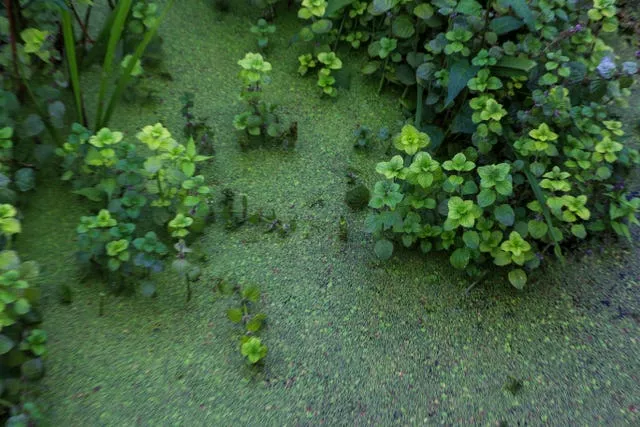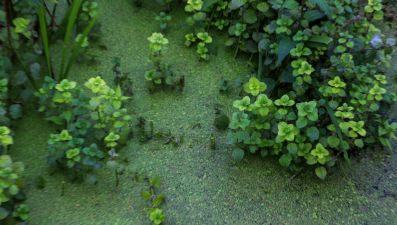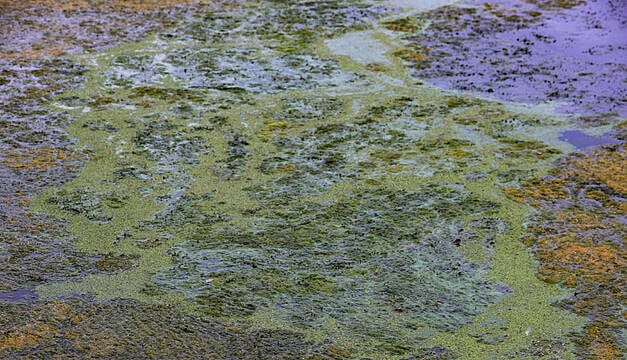The SDLP has submitted a motion to recall the Northern Assembly over the Lough Neagh crisis.
SDLP Assembly leader Matthew O’Toole MLA submitted the motion on Tuesday, saying the algae growth on the Lough “is a catastrophe on a level that far outstrips any other”.
For the recall to be successful it will need signatures from 30 MLAs, but the Assembly will be unable to debate the issue until a speaker is elected.
The DUP has declined to elect a speaker for over a year due to the party’s ongoing boycott of powersharing in protest against post-Brexit trading arrangements.
Over the summer blooms of toxic blue-green algae have covered large parts of Lough Neagh, which is Ireland’s largest freshwater lake and supplies 40 per cent of the North’s drinking water.

The SDLP is proposing the nomination of ministers to establish an independent Environmental Protection Agency to deal with the ecological crisis.
The party is also calling for a short-term plan to address the immediate effects of ecological breakdown on the Lough alongside a long-term recovery strategy.
The SDLP has submitted a petition to recall the Northern Ireland Assembly to address the ecological crisis on Lough Neagh.
It demands intense, coordinated and cooperative action at every level in response.
Sign the petition ans add your support https://t.co/0pZf8U2aFv pic.twitter.com/4qChwJQVyE— The SDLP (@SDLPlive) September 19, 2023
Mr O’Toole said politicians should set aside their differences to tackle the problems facing the Lough.
“The ecological crisis unfolding in front of our eyes on Lough Neagh is a catastrophe on a level that far outstrips any other we’re facing right now. It demands intense, co-ordinated and co-operative action at every level in response,” he said.
“The impact of blue-green algae, caused by a toxic mix of agricultural runoff, invasive species, waste water treatment capacity and higher temperatures, is suffocating Britain and Ireland’s largest freshwater lake.
“It poses a unique and critical threat to biodiversity, animal and human health that we have to work together to address.
“Political leaders have an obligation and an opportunity to set aside our differences and work together in the substantial common interests of our people and our environment.
“I understand that the choice is unenviable for some but the alternative – doing nothing – will condemn the lough, the people who rely on it and future generations.
“We are urging all political parties to agree to recall the institutions to address the crisis and to show people that we can work together to meet the needs of our people and our planet.”

DUP MLA Carla Lockhart said the recall motion was a “stunt” by the SDLP.
“We’ve seen these stunts before, they don’t work, they haven’t worked,” she told the BBC.
“We want to get a resolution, we want the [UK] government to move on the issues that we have outlined to them in relation to the protocol and the Windsor Framework. We are making progress and will continue to do that. Stunts like this don’t help at all.”
She added: “If Stormont was recalled in the morning and there was a debate in the chamber, it wouldn’t necessarily change anything. What we need is a co-ordinated approach right across each of the departments.”

Blue-green algae can pose a health risk to people, pets and wild animals who come into contact with it or ingest it.
Contact or ingestion can cause skin rashes, eye irritations, vomiting, diarrhoea, fever and muscle and joint pain.
Nitrogen and phosphorus from agricultural fertiliser running off fields is believed to be a major contributory factor in the growth of the algae which is linked to excess nutrients in the water.
Climate change has also contributed to the degradation of Lough Neagh which has risen by one degree celsius in just 20 years.

On Tuesday the Catholic Primate Archbishop Eamon Martin of Armagh, and Church of Ireland Primate Archbishop John McDowell of Armagh called for a taskforce to deal with the outbreak of toxic blue-green algae.
Archbishops McDowell and Martin said in a statement that the lough was facing an “environmental disaster” and that the issue was not being given the necessary attention.
“In this, the season of harvest and creation, we share the grave concerns, expressed by many, about the future of our beautiful and precious Lough Neagh,” they said.
They added: “In recent days, we have heard words of reassurance from those charged with protecting Lough Neagh.
“Still, the algae bloom persists and poses a real threat to livestock, pets and humans.
“It is indiscriminate in nature and a blight on the natural landscape and ecosystem.
“We are facing an environmental disaster and, as church leaders, we worry that the issue is not being given the priority it deserves.
“Before Lough Neagh approaches the point of no return, a collective examination of the causes and development of a robust plan to save this unique and ancient ecosystem is needed.”

Bishops McDowell and Martin said the response to battle the algae growth was not fast enough.
“Each one of us is called to be a custodian and a steward of creation, we all share a collective responsibility to safeguard the beauty and wellbeing of our natural surroundings and must maintain and preserve the lough for future generations to enjoy.
“We cannot take it for granted,” they said.
“Our primary concern is that the response is too slow and is tied up in multi-agency bureaucracy.
“Whilst multiple stakeholders debate the remit of responsibility, Lough Neagh and those who live near and around it suffer.
“There is a clear need for decisive leadership.
“We must identify the causes of pollution and devise an action plan capable of arresting the decline.”
The bishops are urging that a taskforce comprised of experts and relevant agencies be formed to submit a report outlining procedures and actions required to “avert a disaster”.
The Ulster Unionist Party environment spokesman Tom Elliott MLA has called on the head of the NI Civil Service, Jayne Brady, to hold an interdepartmental, cross-agency summit to address the Lough Neagh algae growth.

“We appreciate that Daera (Department of Agriculture, Environment and Rural Affairs) has taken some action with the creation of a water quality steering group, but action cannot be taken by one department alone,” he said.
“The blue-green algae blooms at Lough Neagh are incredibly alarming, and I have written to the head of the Civil Service to ask her to call for an emergency summit of the relevant executive departments, arms-length bodies and other stakeholders to plot a way forward for the good of all.
“These organisations need to be kept informed and involved in the process of tackling this emerging crisis.”







